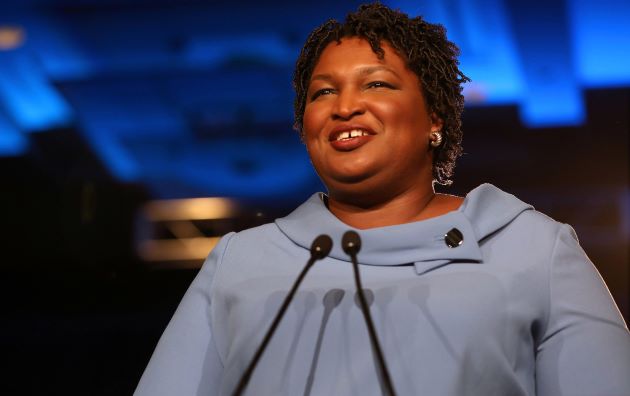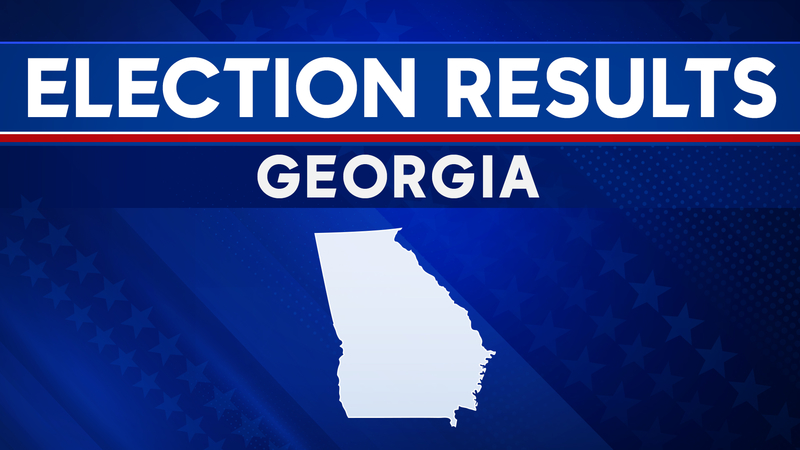A Power Broker Like No Other: Stacey Abrams and the Democratic Party

 Stacey Abrams “galvanized the ground game” in Georgia, which flipped from red to blue in the 2020 presidential election for the first time since 1992, explains Barbara A. Perry and Alfred Reaves IV. Perry is the Gerald L. Baliles Professor and director of presidential studies, and Reaves is the faculty and program coordinator at the University of Virginia‘s Miller Center.
Stacey Abrams “galvanized the ground game” in Georgia, which flipped from red to blue in the 2020 presidential election for the first time since 1992, explains Barbara A. Perry and Alfred Reaves IV. Perry is the Gerald L. Baliles Professor and director of presidential studies, and Reaves is the faculty and program coordinator at the University of Virginia‘s Miller Center.
Watch the Lifetime Learning vodcast, “Women in Politics: Past, Present, and Future,” with Barbara Perry on a panel of UVA experts.
We welcome your comments below.
A POWER BROKER LIKE NO OTHER: STACEY ABRAMS AND THE DEMOCRATIC PARTY
Now that Georgia has completed its recounts, certified the final tallies (twice), and cast its sixteen electoral votes for Joe Biden, the former vice president and president-elect owes Stacey Abrams an immense debt of gratitude for improbably flipping the Peach State from blood red to pale blue, at least at the presidential level.
Although Abrams lost the 2018 Georgia governor’s race, her losing margin of only 1.4 percent, and the specter of voter suppression, energized the former state legislator to mount an activist campaign to register and turn out voters, especially African Americans. Abrams founded Fair Fight Action, a grassroots interest group, to combat the stifling of black votes in Georgia and Texas. Her movement, in concert with other activist organizations, galvanized the ground game in Abrams’s home state, where some 750,000 new voters registered prior to the presidential election.
Georgia had not selected a Democratic presidential candidate since Arkansan Bill Clinton’s 1992 successful White House bid. In 2020, 59.3 percent of first-time voters in the Peach State voted as Democrats, while 35.9 percent cast their ballots as Republicans. Clearly, this difference helped to account for Georgia’s placement in the Biden-Harris column, even if only by a margin of fewer than 13,000 votes.

While leading the battle for voting equity, Abrams has become a national icon and best-selling author of her book: Our Time Is Now: Power, Purpose, and the Fight for a Fair America. It echoes a previous woman Democratic Party power broker, Eleanor Roosevelt, whose last tome, published posthumously, was titled Tomorrow Is Now. How appropriate that this latest king-/queenmaker in the Democratic Party follows in the footsteps of ER but then blazes a wholly new trail—one that can only be forged by an African American woman.
How can we identify a power broker? According to a 1984 edition of Webster’s Collegiate Dictionary, a power broker is “a person (as in politics) able to exert strong influence because of votes or individuals that he controls.” Note the accepted use of the masculine pronoun, which also signified that few women had garnered the label. Now, as a reflection of both the changing use of gender-neutral references and the rise of more women leaders, dictionaries simply refer to a “person” who wields power in politics as a “power broker.” The term’s etymology dates only to 1961.
Coincidentally, the first woman power broker in the Democratic Party reached the zenith of her influence at the very moment the label came into American usage. Eleanor Roosevelt certainly had been the most powerful First Lady in American history during her White House tenure from 1933 to 1945. After her husband’s death, she began to exert influence as the natural heir to his New Deal coalition, to which she added her more progressive postures on gender, race, labor policy, and community development. When FDR’s successor, Harry Truman, named her a member of the United States’ first delegation to the United Nations, she exercised her power brokerage on the world stage, eventually leading the drafting and adoption of the 1948 Universal Declaration of Human Rights.
Republican Dwight Eisenhower’s victory in 1952, however, ended ER’s tenure at the UN during that decade, and she returned to domestic politics, solidifying her influential position among Democrats. Although her choice of a candidate, progressive Illinois governor Adlai Stevenson, failed to win the presidency in both 1952 and 1956 because a majority of Americans simply liked Ike, her ability to attract votes remained so forceful that Senator John F. Kennedy sought her endorsement in 1960.

But ER continued to support Stevenson through the Democratic Convention that year, and JFK had to go metaphorical hat in hand to beseech the former First Lady at her Hyde Park cottage, Val-Kill, in August 1960. After discussing their common policy interests and her hope that the youthful Kennedy would call on the more experienced Stevenson for advice, especially in world affairs, the Democratic candidate and his party’s grande dame emerged from their lunch smiling broadly.
It didn’t hurt JFK’s cause that he had also come to Hyde Park to lay a wreath at FDR’s grave to mark the twenty-fifth anniversary of his signing the Social Security Act into law. Winning Mrs. Roosevelt’s enthusiastic endorsement, her outreach to Stevenson supporters, her filming of Kennedy ads, and her tireless campaigning for him around the country helped to ensure his razor-thin popular vote victory and more comfortable Electoral College win over Vice President Richard Nixon. Until her death in November 1962, ER reached out to President Kennedy frequently about the issues of most concern to her, and he named Mrs. Roosevelt to the new Peace Corps advisory board and appointed her director of the President’s Commission on the Status of Women, which produced the first equal-pay legislation in 1963.
Much like Eleanor Roosevelt, Stacey Abrams paved her way in the political world through grassroots efforts, but, unlike ER, she added elective office to her résumé (as the first woman party leader to serve in the Georgia General Assembly). Abrams’s rise to political prominence was relatively recent, but the work to flip Georgia from a conservative Republican stronghold has been underway for years. Predominantly African American organizations, like the New Georgia Project and ProGeorgia, would be responsible, along with Abrams, for moving the state to the Democratic column in 2020’s presidential race and fundamentally changing the Democratic Party’s approach to previously marginalized voters. A common thread among many of these bottom-up organizations is that they are led by Black women, which is unsurprising given their ongoing fight to make their voices heard in the former Confederate state.

Working as part of this unified grassroots coalition, by December 3, 2020, Abrams and her compatriots had ensured that at least one million Georgians will receive mail-in ballots for the January 5, 2021, U.S. Senate runoff elections, which will also determine whether the GOP will maintain its majority in Congress’s upper chamber. This achievement in disseminating ballots represents a historic milestone in its own right, one that reveals the power of local organizing. Demonstrating that early investment in states that Democratic Party leaders and their consultants had previously given up for lost paid dividends for Joe Biden and may continue to reap benefits beyond 2020.
Abrams and her work in Georgia undoubtedly have created a path to her bright future in Democratic Party leadership, perhaps as a candidate, office-holder, policy activist, and/or president-maker, especially when the Clinton-Obama-Biden eras eventually fade from the scene. She owes her current influence and indeed stardom not only to her own celebrated and controversial 2018 run for Georgia governor but to her effective collaboration with African American women proponents of societal reform, from grassroots to the White House. Whether this Georgia ground game can deliver Democrats the two U.S. Senate seats at stake in the state’s upcoming run-off contests remains to be seen. Yet, at the national level, the team of Abrams and Vice President-elect Kamala Harris can utilize their mandate to achieve the federal policies long fought for by generations of Black women who have reliably supported the Democratic Party since the New Deal but without due recompense.
- A Revolution in the Air: The Wright Brothers Take to the Sky on December 17, 1903
- Musings on National Violin Day
- Making the Promise Real: How a UN Tax Convention Can Fulfill the UNDHR’s Vision
- UVA Club of Atlanta: Virtual Pilates Class
- UVA Club of Vietnam: J-Term Farewell Social
- UVA Club of Atlanta: UVA Women's Basketball at Georgia Tech